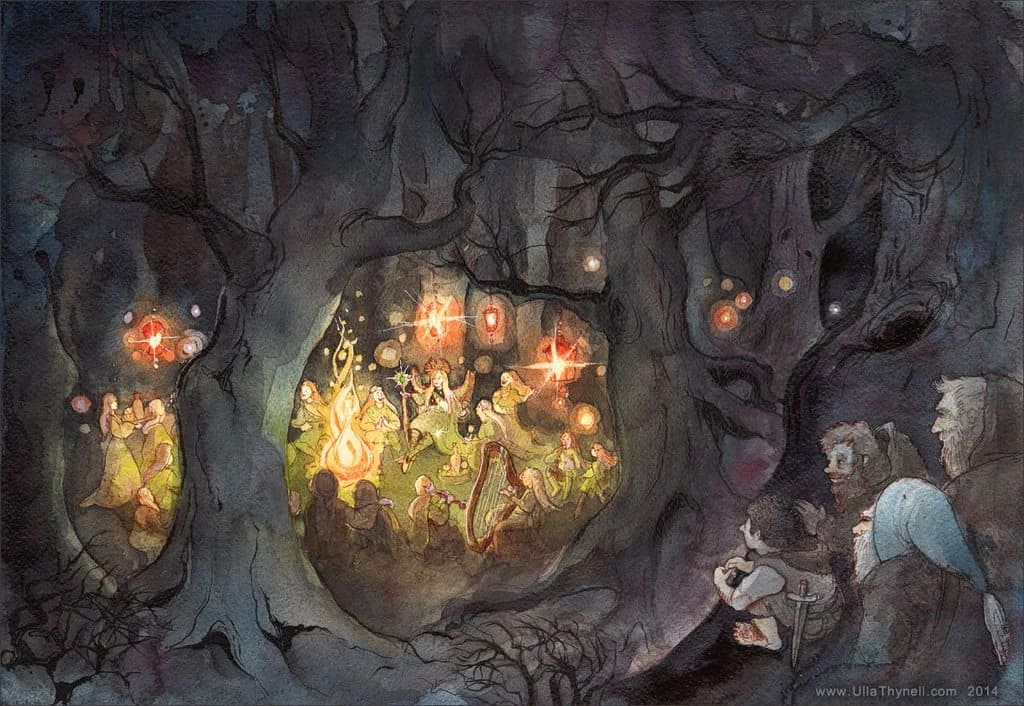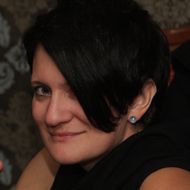Quenya and Others: A Note on Tolkien’s Constructed Languages

“No language is justly studied merely as an aid to other purposes. It will in fact better serve other purposes, philological or historical, when it is studied for love, for itself.”
J.R.R. Tolkien
This article will explore one of the most gripping and profound topics of our course – languages of Middle-earth.
Perhaps, this field of the legendarium was as captivating to Tolkien as it is to us, for, as we have partially discussed in the previous articles, he was a devoted linguist from his boyish years of composing his own fantasy languages and drawing in discussions on ancient dialects with fellow companions to his career in New English Dictionary (now known as Oxford English Dictionary), professional life in colleges of the Oxford university and his translation and commentary of Beowulf.
Let us begin with a much-needed definition and some general data on artificial languages:
Artificial (constructed) languages are languages created with the aim of completing and diversifying a fantasy realm. There are over a dozen constructed languages spoken in the books by Tolkien and this number is not finite.
J.R.R. Tolkien’s languages are considered to be a miracle in the world of literature. There’d been none like them and there are still no such.
One of the qualities of Tolkien’s writing that distinguished him from all the other fantasy writers was his scrupulous historical precision. As a linguist, Tolkien knew the value of the historical aspect of language and gave it much credit both in his professional and creative life. It is commonly known that in order for a language to be ‘alive’ it has to have native speakers and some cultural background. That is why Esperanto never made it. So, Tolkien gave these necessary constituents to his constructed languages: not only did he provide them with proper completeness and complexity on grammatical and lexical levels, alphabets and some cultural basis along with native speakers but also with detailed history over which these languages were developing and through which their etymological changes could be traced back. To quote the author himself:
‘It was just as the 1914 War burst on me that I made the discovery that 'legends' depend on the language to which they belong; but a living language depends equally on the 'legends' which it conveys by tradition. ... Volapuk, Esperanto, Ido <...> are dead, far deader than ancient unused languages, because their authors never invented any Esperanto legends.’
Here we should perceive ‘legends’ as historical/cultural heritage which is intrinsic to language. Without it language is nothing more than a well-structured system of united symbols that cannot function.
In reality, Tolkien dedicated more years (over six decades!) to the design and modification of his artificial languages than to writing of his fantasy masterpieces. Why that long? Well, despite such work being extremely meticulous and complicated, in the case of these languages, it required deep prior linguistic knowledge and expertise in real-life languages both currently used and dead. This draws us to an important observation that all (or mostly all) of Tolkien’s constructed languages are actually based on languages ‘from this world’.
Today we will look at the most wide-spread and well-known languages of Tolkien’s Secondary world: Elvish Quenya and Sindarin, Dwarvish Khuzdul and, last but not least, Westron, the language of men and hobbits.
NB:
The number of artificial languages of Arda is truly quite vast and is not limited by those mentioned above. But these four tongues serve to be properties of races that are most prominent in the stories about Middle-earth, and thus appear more often and in longer utterances.
LANGUAGES OF MIDDLE-EARTH
Quenya
Quenya is High-elven, it was spoken by the first elves of Middle-earth and is one of the most ancient languages on the continent. Quenya is the language of Elvish folklore.
The distinctive feature of Quenya is musicality as its native speakers employed it in narration mostly released in poetry and songs.
If we take a look at the structure of this language, we will notice that one single word in Quenya can contain meanings that only several discrete words would be able to cover in the English language:
utúvienyes
I have found it!
anar caluva tielyanna
The sun shall shine upon your path.
The real language that Quenya was inspired by is Finnish. Yet it is still crucial to understand that Quenya is an independent tongue and all the correlations with other languages that can be identified in its structure or system of writing do not determine or enclose it fully. Among other influences that can be distinguished on both grammatical and lexical levels are Latin and Greek.
The most famous text in Quenya is Galadriel's Lament in Lórien – a complete poem from Lord of the Rings.
|
Original Ai! laurië lantar lassi súrinen, yéni únótimë ve rámar aldaron! Yéni ve lintë yuldar avánier mi oromardi lisse-miruvóreva Andúnë pella, Vardo tellumar nu luini yassen tintilar i eleni ómaryo airetári-lírinen.
|
Translation Ah! like gold fall the leaves in the wind, long years numberless as the wings of trees! The years have passed like swift draughts of the sweet mead in lofty halls beyond the West, beneath the blue vaults of Varda wherein the stars tremble in the song of her voice, holy and queenly. |
Sindarin
According to the history of Middle-earth, at some point Quenya was banned from public use and replaced by Sindarin – a Grey-elven language that was less lyrical and tonic. It is a living language of the elves that we come across in the Hobbit and the Lord of the Rings. Many proper nouns of the legendarium (both names of the characters and place names) appear before the reader in Sindarin. This language, in comparison to musical Quenya, is tighter and more rigid and strongly resembles Welsh – a Celtic language. Among the most notable examples in Sindarin: Aragorn, Anduin (‘The Great River’) and Mordor.
Here you can find a small table with examples of basic word formation in Sindarin:
| Mordor, Gondor, Eliador | ‘-dor’ = land |
| Mordor, Moria, Morgul | ‘Mor-’ = black |
| Anduin, Baranduin, Celduin | ‘-duin’ = river |
Khuzdul
Khuzdul or the Dwarvish language is a secret tongue that dwarves utilise for private discussions and safer communication among their race. This language is based on the Semitic languages with a pragmatic reason behind it: Tolkien saw a clear cultural connection between dwarves and the Jews as between those who lost their land and are treated with unreasonable distrust.
Baruk Khazâd! Khazâd ai-mênu!
Blessings upon the Dwarves! The Dwarves are upon you!
(a battlecry of Dwarves)
As you can notice in the phrase above, Khuzdul has a distinctive feature of plosive consonants (k/b/g/k/etc.). Due to this the language sounds rougher and more firmly as if supplementing the image of barbarian yet honourable dwarves.
Westron
By the Third Age, when the events of the Hobbit and the Lord of the Rings took place, Westron was the most wide-spread and common language in Middle-earth. What does it look like? Well, open any book of Tolkien’s, which history unfolds during the Third Age, and begin reading it. You do understand what is written there, right? Quite surprisingly, this is Westron itself – the Common Speech of Middle-earth that almost every representative of any race could speak and comprehend. Initially, Westron was a language of the Dúnedain – the men of Númenor and their descendents. Subsequently, with the growth of the human race, other creatures obtained this tongue, most notably, hobbits.
Farewell, my friends! May the grace of the Valar go with you!
Westron is, without any doubt, based on English and Old-English (Anglo-Saxon) altogether. The vast majority of grammar, vocabulary and pronunciation patterns are identical to the modern English language with some derivation from Anglo-Saxon in proper nouns or figures of speech.
To sum everything up, artificial languages of Tolkien’s Secondary world are a marvellous phenomenon both in the realms of literature and linguistics. Perhaps, Tolkien’s artlangs are the most exquisite and sophisticated elements of his legendarium. These fascinating and whimsical tongues prolong Middle-earth into our world and perpetuate J.R.R. Tolkien’s name in our history.
Karima Lakekhal
References
- Tolkien, J.R.R., Fimi, D. and Higgins, A. A Secret Vice: Tolkien on Invented Languages. – 2016.
- Weiner E.S.C., Marshall J. Tolkien’s invented languages // From Elvish to Klingon: exploring invented languages. – 2011. – С. 75-110.
- Coker L. Tolkien's Linguistics: The artificial languages of Quenya and Sindarin //2016 NCUR. – 2016.
- Tikka P. The Finnicization of Quenya // Arda Philology. – 2007. – Т. 1. – С. 1-13.
- Fauskanger H. Quenya course. – 2003.
- Cardoza C. A Secret Vice: The Desire to Understand JRR Tolkien’s Quenya Or, Out of the Frying-Pan Into the Fire: Creating a Realistic Language as a Basis for Fiction. – 2015.
- Swann D., Elvin W., Tolkien J. R. R. The road goes ever on. – Caedmon, 1967.
- Tolkien J.R.R. The Lord of the Rings / Tolkien J.R.R. - 8. - London: HarperCollins, 1991. - 1178 c. - ISBN 9780261102385


